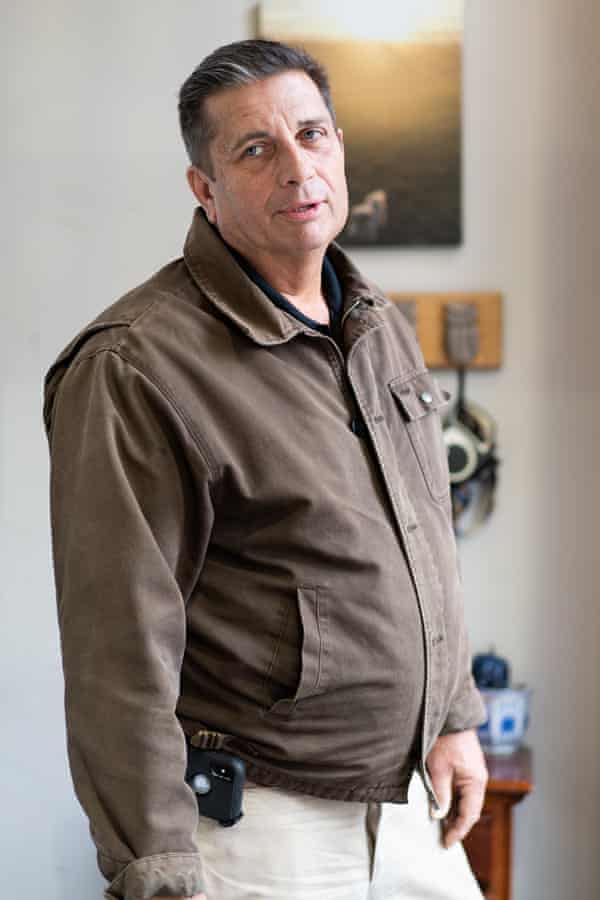Your smile's cosmic history: We discovered the origin of fluoride in early galaxies
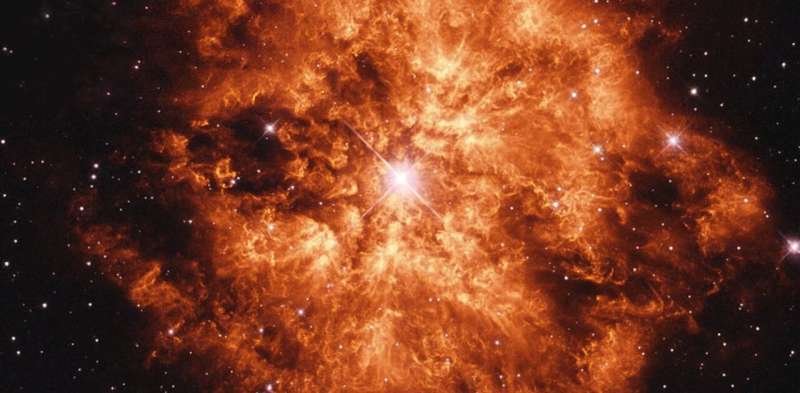
Look at the ingredients on a tube of toothpaste and you will probably read something like "contains sodium fluoride." Fluoride, as you probably know, is important for healthy teeth. It strengthens enamel, the hard, protective layer around a tooth, and so helps prevent cavities.
You may not think too deeply about toothpaste. But like all things on Earth, from the majestic to the mundane, fluoride—and the story of a smile—has a cosmic origin. Now, my colleagues and I have published a paper in Nature Astronomy that sheds some light on it.
Virtually all natural elements were formed long ago in the history of the universe. Hydrogen is the oldest element: it formed very shortly after the big bang, about 14 billion years ago. Within a few minutes of the big bang, the light elements helium, deuterium and lithium were also formed in a process called big bang nucleosynthesis. Since then, nearly every other element has been forged in processes associated with the life and death of stars. But those stars were not always around.
We still don't know exactly when the first stars ignited in the universe, but it probably didn't happen for about 100 million years or so after the big bang. Before this, the universe was filled with a fog of hydrogen, mingled with the mysterious, invisible substance astronomers call dark matter. This fog was not smooth, but rippled—slightly denser in some places. It was these regions that started to contract, or "collapse," due to gravity, to form the first galaxies. Where the gas got dense enough, stars ignited and lit up the universe.
The following few billion years was a time of rapid growth: the rate of star formation in the universe rose sharply until it reached a peak, 8 to 10 billion years ago. Ever since that "cosmic noon," the overall rate of star formation in the universe has been in decline. That's why astronomers are so interested in the early phases of the history of the cosmos: what happened then shaped what we see around us today.
While we have quite a lot of information about how the growth of galaxies "ramped up" in terms of their star formation, we have relatively little insight into their chemical evolution at the earliest times. This is important because, as stars live and die, the elements they produce become dispersed throughout a galaxy and beyond. Many years later, some of those elements can form new planets like ours.
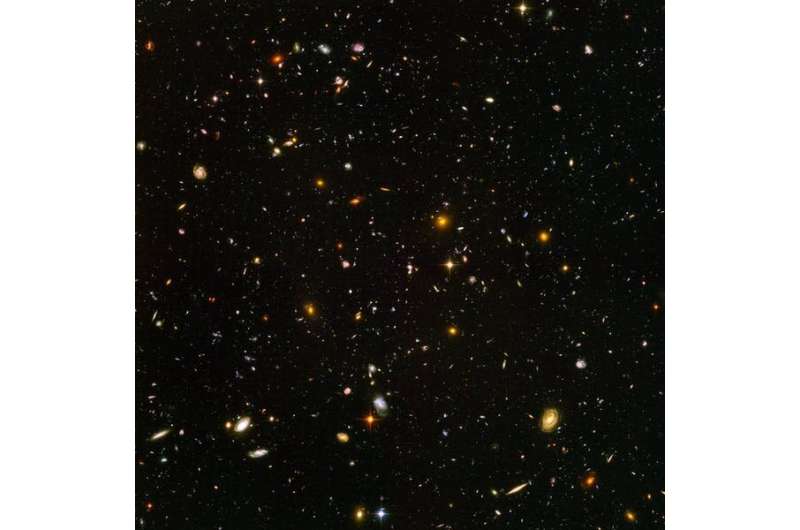
Rapid evolution
We observed a distant galaxy called NGP-190387 with the Atacama Large Millimeter/sub-millimeter Array (Alma)—a telescope that detects light with a wavelength of around one millimeter. This allows us to see the light emitted by cold dust and gas in distant galaxies. The data revealed something unexpected: a dip in the light at a wavelength of exactly 1.32 millimeters. This corresponds exactly to the wavelength at which the molecule hydrogen fluoride (HF), comprising a hydrogen atom and fluorine atom, absorbs light (taking into account a shift in wavelength that happens due to the universe's expansion). The deficit of light implies the presence of clouds of hydrogen fluoride gas in the galaxy. This light has taken over 12 billion years to reach us, and we see the galaxy as it was when the universe was 1.4 billion years old.
This is exciting, because it provides information about how galaxies first became enriched with chemical elements shortly after they first formed. We can see that even at this early time, NGP-190387 had a high abundance of fluorine. Although we have observed other elements in distant galaxies, such as carbon, nitrogen and oxygen, this is the first time fluorine has been detected in a star-forming galaxy at such a distance. The greater the variety of elements we can observe in early galaxies, the better our understanding of the process of chemical enrichment at that time.
We know that fluorine can be produced in different ways: for example, in star explosions called supernovas and in certain "asymptotic giant branch" stars—red supergiant stars nearing the end of their life, having burned most of the hydrogen and helium in their cores and now swollen in size.
Models of how elements form in stars and in supernovae can tell us how much fluorine we should expect from these sources. And we found that the abundance of fluorine was too high in NGP-190387 to be explained by supernovas and asymptotic giant branch stars alone. An extra source was needed, and this is probably another type of star called a Wolf-Rayet. Wolf-Rayet stars are quite rare—there are only a few hundred cataloged in the Milky Way, for example. But they are extreme.
Wolf-Rayet stars are a phase in the lifecycle of very massive stars—with more than ten times the mass of our Sun. Approaching the end of their short life, these stars burn helium in their cores, and are millions of times more luminous than the Sun. Unusually, Wolf-Rayet stars have lost their envelope of hydrogen via powerful winds, leaving the helium core exposed. They will eventually explode in dramatic core-collapse supernova explosions. When we added the amount of fluorine expected from Wolf-Rayet stars to our model, we could finally account for the dip in light from NGP-190387.
This adds to a growing body of evidence that shows that the growth of galaxies was surprisingly fast-paced in the early universe: a frenzy of star formation and chemical enrichment. Those processes lay the foundations for the universe we see around us today, and this work provides new insight into the detailed astrophysics at play, over 12 billion years ago.
But perhaps the main take away is that it shows that the story of your smile is a tale as old as time.Astronomers make most distant detection yet of fluorine in star-forming galaxy
Journal information: Nature Astronomy
Provided by The Conversation
Astronomers make most distant detection yet of fluorine in star-forming galaxy
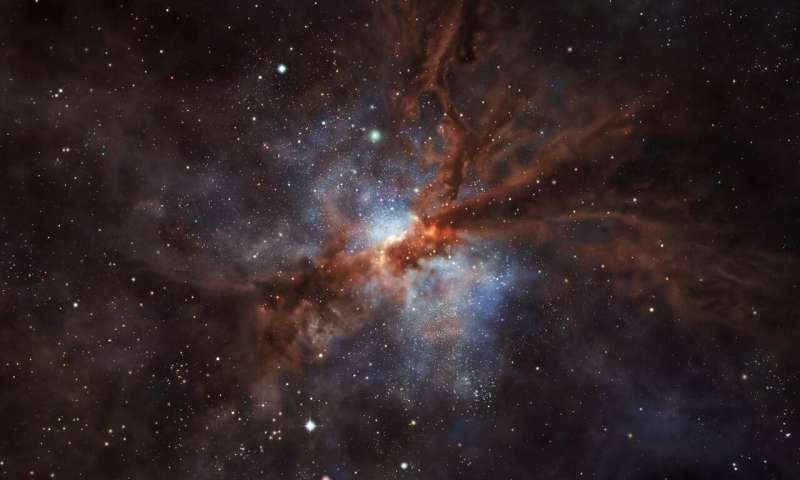
A new discovery is shedding light on how fluorine—an element found in bones and teeth as fluoride—is forged in the universe. Using the Atacama Large Millimeter/submillimeter Array (ALMA), in which the European Southern Observatory (ESO) is a partner, a team of astronomers have detected this element in a galaxy that is so far away its light has taken over 12 billion years to reach us. This is the first time fluorine has been spotted in such a distant star-forming galaxy.
"We all know about fluorine because the toothpaste we use every day contains it in the form of fluoride," says Maximilien Franco from the University of Hertfordshire in the UK, who led the new study, published today in Nature Astronomy. Like most elements around us, fluorine is created inside stars but, until now, we did not know exactly how this element was produced. "We did not even know which type of stars produced the majority of fluorine in the universe!"
Franco and his collaborators spotted fluorine (in the form of hydrogen fluoride) in the large clouds of gas of the distant galaxy NGP–190387, which we see as it was when the universe was only 1.4 billion years old, about 10% of its current age. Since stars expel the elements they form in their cores as they reach the end of their lives, this detection implies that the stars that created fluorine must have lived and died quickly.
The team believes that Wolf–Rayet stars, very massive stars that live only a few million years, a blink of the eye in the universe's history, are the most likely production sites of fluorine. They are needed to explain the amounts of hydrogen fluoride the team spotted, they say. Wolf–Rayet stars had been suggested as possible sources of cosmic fluorine before, but astronomers did not know until now how important they were in producing this element in the early universe.
"We have shown that Wolf–Rayet stars, which are among the most massive stars known and can explode violently as they reach the end of their lives, help us, in a way, to maintain good dental health," says Franco.
Besides these stars, other scenarios for how fluorine is produced and expelled have been put forward in the past. An example includes pulsations of giant, evolved stars with masses up to few times that of our sun, called asymptotic giant branch stars. But the team believes these scenarios, some of which take billions of years to occur, might not fully explain the amount of fluorine in NGP–190387.
"For this galaxy, it took just tens or hundreds of millions of years to have fluorine levels comparable to those found in stars in the Milky Way, which is 13.5 billion years old. This was a totally unexpected result," says Chiaki Kobayashi, a professor at the University of Hertfordshire. "Our measurement adds a completely new constraint on the origin of fluorine, which has been studied for two decades."
The discovery in NGP–190387 marks one of the first detections of fluorine beyond the Milky Way and its neighboring galaxies. Astronomers have previously spotted this element in distant quasars, bright objects powered by supermassive black holes at the center of some galaxies. But never before had this element been observed in a star-forming galaxy so early in the history of the universe.
The team's detection of fluorine was a chance discovery made possible thanks to the use of space and ground-based observatories. NGP–190387, originally discovered with the European Space Agency's Herschel Space Observatory and later observed with the Chile-based ALMA, is extraordinarily bright for its distance. The ALMA data confirmed that the exceptional luminosity of NGP–190387 was partly caused by another known massive galaxy, located between NGP–190387 and the Earth, very close to the line of sight. This massive galaxy amplified the light observed by Franco and his collaborators, enabling them to spot the faint radiation emitted billions of years ago by the fluorine in NGP–190387.
Future studies of NGP–190387 with the Extremely Large Telescope (ELT)—ESO's new flagship project, under construction in Chile and set to start operations later this decade—could reveal further secrets about this galaxy. "ALMA is sensitive to radiation emitted by cold interstellar gas and dust," says Chentao Yang, an ESO Fellow in Chile. "With the ELT, we will be able to observe NGP–190387 through the direct light of stars, gaining crucial information on the stellar content of this galaxy."
This research was presented in the paper "The ramp-up of interstellar medium enrichment at z > 4" to appear in Nature AstronomyALMA scientists detect signs of water in a galaxy far, far away
More information: Maximilien Franco, The ramp-up of interstellar medium enrichment at z > 4, Nature Astronomy (2021). DOI: 10.1038/s41550-021-01515-9. www.nature.com/articles/s41550-021-01515-9
Journal information: Nature Astronomy
Provided by ESO










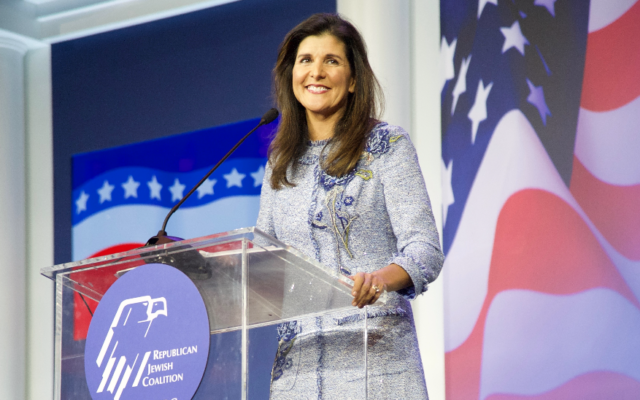









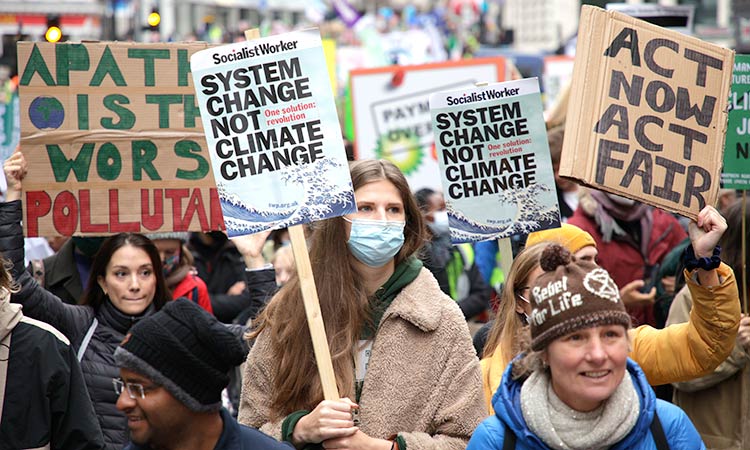





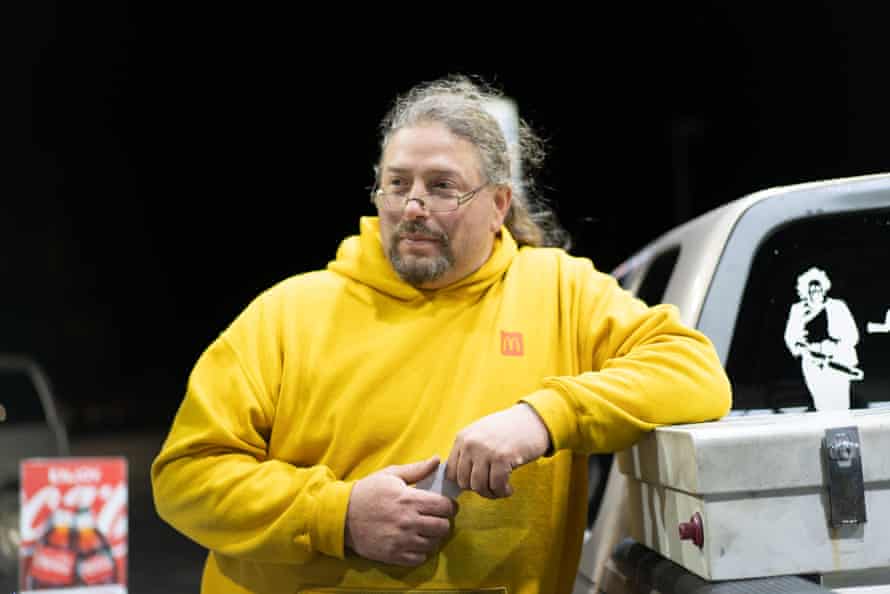
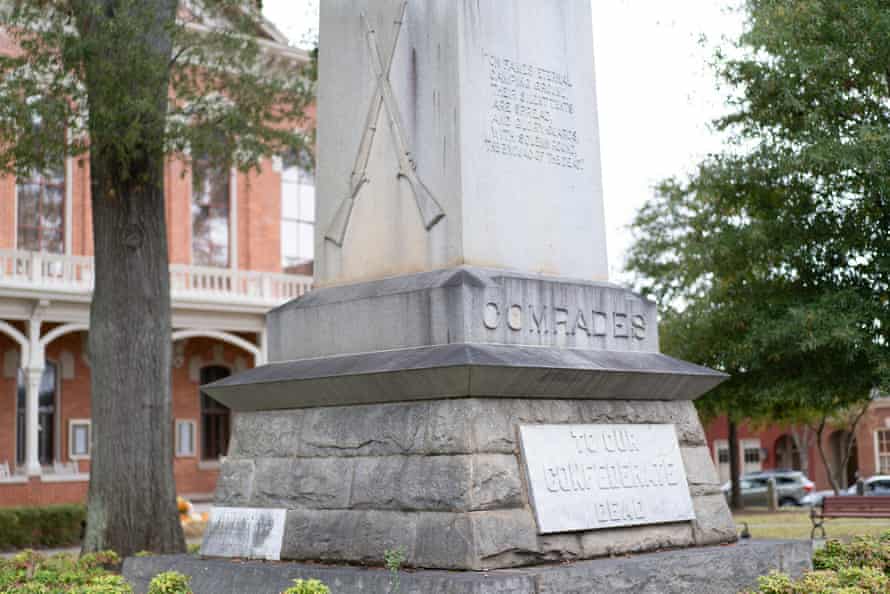
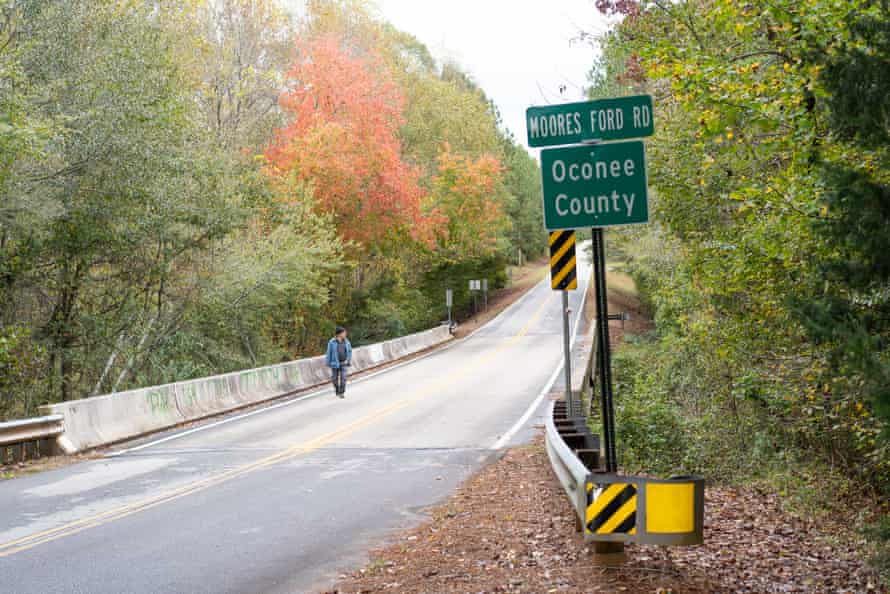 Two Black couples were lynched at Moore’s Ford Bridge, outside Monroe, Georgia, in 1946.
Two Black couples were lynched at Moore’s Ford Bridge, outside Monroe, Georgia, in 1946.